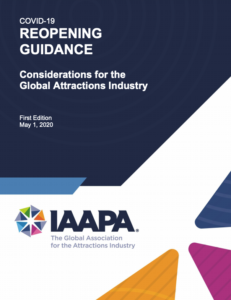 Earlier this month, the International Association of Amusement Parks and Attractions (IAAPA) published a reopening guidance document for operators of theme parks and other tourist attractions as they plan to reopen amidst the ongoing COVID-19 pandemic. As parks such as Shanghai Disneyland come back to life with stringent health protocols in place, we’re beginning to see what a coronavirus-era trip to a theme park might look like.
Earlier this month, the International Association of Amusement Parks and Attractions (IAAPA) published a reopening guidance document for operators of theme parks and other tourist attractions as they plan to reopen amidst the ongoing COVID-19 pandemic. As parks such as Shanghai Disneyland come back to life with stringent health protocols in place, we’re beginning to see what a coronavirus-era trip to a theme park might look like.
The 36-page guide outlines principles and considerations compiled by theme park and attraction operators across the globe with input from an epidemiologist. According to the document, the considerations are “aimed to focus on medical science and operation expertise rather than general perceptions.”
Before diving into the more detailed best practices, IAAPA lists the following “topline considerations” for reopening:
- Allow healthy guests to enjoy themselves while encouraging the use of face masks and similar coverings.
- Provide hand sanitizer and other means for frequent hand-washing.
- Manage density to encourage social distancing, keeping guests at least 6 feet apart.
- Minimize frequently touched areas; when unavoidable, sanitize those surfaces regularly.
- Protect employees via barriers, protective coverings and distancing.
- Communicate with guests and employees methods to prevent the spread of germs.
- Have a plan if a guest or employee becomes sick in the park or attraction.
Below are some of the interesting takeaways I found in the reopening guidance:
1. In a pandemic, theme parks and other similar attractions are unique in some ways.
There is no “one-size-fits-all” plan for large gatherings during the coronavirus crisis. IAAPA notes that theme parks and similar attractions have some advantages that work in their favor:
- Capacity can be controlled more easily than at other points of interest like a beach or shopping district.
- Ride capacities also can be managed through methods such as spacing riders out across a train or ride vehicle.
- Exposure time is limited — guests often roam through theme parks rather than staying in one spot in close proximity to others for significant periods of time.
- Many park guests who do spend a longer amount of time in close proximity are families who live together. Therefore, they don’t need to practice social distancing to the same degree as strangers.
2. Parks should limit capacity wherever and whenever possible.
Parks should evaluate park, facility and attraction capacities:
- A park’s capacity should be determined by a “calculation based on square footage that allows for 6 feet of physical distancing per person.” The following section elaborates on those calculations.
- Signs or markings on pavement can outline physical distancing guides and spaces.
- Start small and gradually increase capacity as restrictions are loosened.
- Stagger arrival times to minimize crowds at entrances.
- Encourage online ticket purchases (more on that later).
- Offer all-inclusive package deals that combine park admission, parking, food and beverage and upgrades like reserved seating.
3. Calculations and formulas can establish max capacities.
Many parks already know what their max capacity is. But the guide provides formulas that parks and attractions can use if they need to reassess their theoretical capacities:
- There are many factors to consider beyond the midway: queue lines, waiting areas, pre-shows and vehicle capacity — all should be calculated to maintain 6 feet of distance between guests, or 36 square feet around a person (where possible).
- Parks should keep in mind common areas that may be more crowded with fewer guests in lines, theaters and other venues that can hold large crowds.
The guide instructs parks to calculate capacities by dividing the park’s total square footage of guest-accessible space by the number of square feet required per person (36 square feet or 28.3 square feet for a circle per guest).
So if a park has 500,000 square feet of guest-accessible space, dividing that number by 36 or 28.3 would yield a maximum capacity of 13,888 or 17,667 guests, respectively. (Math!)
4. Temperature checks and health screenings should not be a priority.
The guide does not recommend the use of temperature checks and health screenings as a “primary operating principle.” While these checks have already been implemented at some attractions, the document states that temperature checks can be troublesome “due to the inconsistent nature of readings in outdoor environments.”
Additionally, the guide acknowledges the fact that many individuals who are carrying COVID-19 are asymptomatic and therefore do not have a fever. So while you might still see temperature scanners at parks this summer, they aren’t the most effective way to keep contagious people out of a park.
However, if an attraction elects to have health screenings at entrances or is mandated to by local/state governments, the guide suggests they:
- Screen everyone (guests, employees, vendors, contractors, etc.).
- Position screeners close to entry points but apart from security checkpoints.
- Operate them with social distancing protocols in place.
- Review, understand and comply with any applicable local, state or federal privacy requirements.
5. Face masks are encouraged but not necessarily required.
If you follow the news, you know the use of face masks can be a dicey topic. They reduce the risk of transmission of COVID-19 but can be uncomfortable to wear, especially in the heat. The guide suggests that park operators consult with local workplace health and safety agencies to determine whether or not face masks can be required and if they must be provided by the attraction.
The guide recommends that operators encourage guests to wear face masks or coverings (unless local governments require them). Additionally, they should have protocols in place to deal with guests who refuse to wear them.
Another challenge that face masks pose is that they are technically loose articles and could be a hazard on intense attractions such as roller coasters, where loose articles are often prohibited. Policies related to wearing face masks on rides will likely be made by the individual park or park chain.
The rules surrounding face masks will likely change as parks continue to develop and modify their procedures.
6. Make queue lines virtual or at least socially distanced.
This might be one of the most noticeable changes: virtual queue technology can be used to reduce the length of time guests spend standing within close proximity to one another. Many parks already use this technology as an up-charge for guests who want to wait virtually or shorten their wait time.
If virtual queueing is not feasible, floor markings should be added to queue lines to encourage social distancing.
7. Ride operations may never be the same.
This is why we’re here: the roller coasters, the drop towers, the dark rides — the rides are what make the park. But roller coasters and other rides can be a little grimy as is. That will have to change in this new COVID-19 world.
In today's #IAAPA News Daily: Staff at SeaWorld Orlando in Florida made test runs on the "Mako" roller coaster while wearing a variety of face masks and practicing social distancing. https://t.co/GaDauRe01z
— IAAPA (@IAAPAHQ) May 20, 2020
The frequent cleaning of some attractions won’t be feasible, and parks should consider closing them for the duration of the pandemic. These include playgrounds, interactive mazes, touch pools, etc.
Hand sanitizer dispensers should be offered at all ride entrances and exits. Employees will need to regularly sanitize surfaces frequently touched by guests or employees, including handrails, armrests, restraints, lap bars, grips, seatbelts, over-the-should restraints, etc.
Height-check operations will need to be modified to reduce guest and employee interaction. The guide recommends that parks use touch-free methods to check that guests are tall enough to ride. These might include highly visible markers that can be seen from farther away.
While restraint-checking protocols likely won’t change as they are mandated by state/local governments and ride manufacturers, employees may be able to use their feet or knees to check movement when verifying that safety gates are locked and secured rather than hands.
Operators may opt to close off some seats or rows to allow for more distance between riders.
Single-rider lines may be a thing of the past as this system places riders in close proximity with random guests who they do not live with. Operators should aim to board family members or those living within the same household together when possible.
The guide does not directly address in-station storage bins (beyond sanitizing them regularly), but parks may opt to do away with them or change them so that all belongings aren’t left in one large group.
8. Theaters and similar attractions
Indoor theater shows and other similar attractions where guests sit close to one another for extended periods of time pose a higher risk than outdoor attractions. The guide suggests that park operators:
- Manage capacity to allow for proper social distancing (both from side-to-side and front to back).
- Consider increasing the number of performances since building capacities will be reduced.
- Allow for extra time before and after shows for guests to adjust to new seating arrangements.
- Stagger entrances and exits to reduce crowding.
- Disinfect seats between each show.
- Evaluate specific situations where social distancing may not be feasible (character meet-and-greets, animal feedings, inviting guests on-stage, etc.).
9. Food and beverage operations must be carefully executed.
 This is one of the most detailed sections of the document, and rightfully so. From moving food carts to sit-down restaurants, parks and attractions must be extremely cautious when operating food and beverage sales. Physical distancing should be maintained, and the guide references the World Health Organization’s recommendation of having a maximum of four people per every 108 square feet of space.
This is one of the most detailed sections of the document, and rightfully so. From moving food carts to sit-down restaurants, parks and attractions must be extremely cautious when operating food and beverage sales. Physical distancing should be maintained, and the guide references the World Health Organization’s recommendation of having a maximum of four people per every 108 square feet of space.
Specifically, “tables should be arranged such that the distance from the back of one chair to the back of another chair should be more than 3 feet apart and that guests face each other from a distance of at least 3 feet.”
In addition to standard cleaning procedures, additional actions parks should take include:
- Frequently sanitize host stands.
- Clean beepers/pagers between each use.
- Replace reusable menus with single-use disposable menus.
- Use single-use or non-porous placemats that can be discarded or cleaned between each use.
- Use mobile ordering if possible to reduce time spent with employees and limit cash or card transactions.
- Remove self-serve condiment containers and utensil dispensers (consider pre-wrapped plastic utensils).
- All straws should be wrapped.
- Use sneeze guards and plexiglass barriers where feasible.
- Eliminate or carefully evaluate buffets and self-service food operations (only pre-packaged food at the latter).
- Refillable drink stations should be eliminated or assign an employee to dispense refills.
10. Touch-free payments should be the new norm.
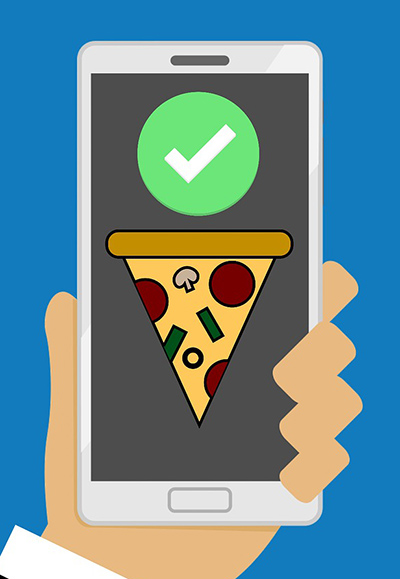 Even prior to the pandemic, parks were increasingly offering online ordering for tickets, food and more in-park activities. This will become even more prevalent as parks reopen.
Even prior to the pandemic, parks were increasingly offering online ordering for tickets, food and more in-park activities. This will become even more prevalent as parks reopen.
The guide suggests that parks and attractions:
- Promote advance online ticket purchases (which many already do).
- Avoid cash-handling.
- Use credit card readers that allow for guests to insert/swipe their own cards.
- Clean card readers and ATMs frequently.
- Assign only one employee to each register if possible and clean it between each shift.
- Use physical barriers (like clear plexiglass) to separate employees from guests at registers and sales counters.
Note: Six Flags has already confirmed that guests will be required to make advance reservations for their visits.
11. Make a plan to care for guests or employees with COVID-19 symptoms.
The guide offers detailed instructions for what an attraction should do if a guest comes to a first-aid location with COVID-19 symptoms (cough, shortness of breath, fever, etc.):
- Have a containment room or isolation area for guests or employees with symptoms.
- Space beds at least six feet apart to maintain social distancing.
- Assess the individual’s symptoms and check their temperature.
- Check for a protocol mandated by local government.
- Create an action plan if the individual requires transportation to a hospital.
- Give non-critical individuals information on how to follow up with a medical professional.
- Discourage members of the individual’s party from continuing their visit (offer discounted or complimentary admission for another day.
12. Parks can only do so much. Ultimately, guests are responsible for their own actions.
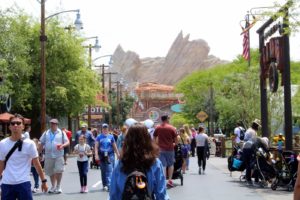 While a park can apply every guidance contained in this document, much of the responsibility lies with the guest. The reopening guidance outlines things that guests will need to do to help parks limit the risk of transmission of COVID-19 (and disease in general):
While a park can apply every guidance contained in this document, much of the responsibility lies with the guest. The reopening guidance outlines things that guests will need to do to help parks limit the risk of transmission of COVID-19 (and disease in general):
- If someone in your group isn’t feeling well, don’t visit (obvious but needs repeating).
- Those in high-risk groups (over 65 or underlying medical conditions) should remain home or be extra vigilant about maintaining social distancing while at the park.
- Wear face masks if safe and feasible.
- Wash hands frequently.
- Use hand sanitizer when hand-washing is unavailable.
We should all prepare for and expect theme park visits to be different and perhaps slower for the time being. It’s important to be patient with and respect employees and fellow guests.
The guide also contains detailed recommendations for water park and family entertainment centers (FECs). Those can be found in the IAAPA reopening guidance in its entirety here.
What safety measures do you expect to see at theme parks and other attractions as they reopen? Share in the comments section below.

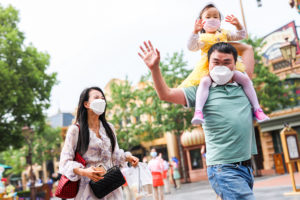


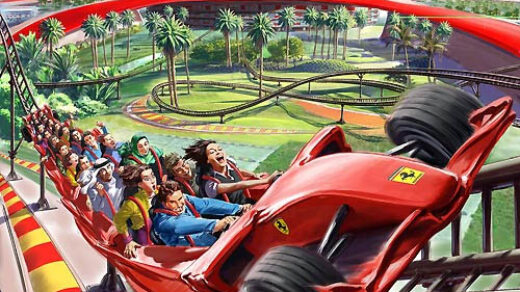





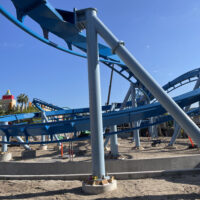





Recent Discussion